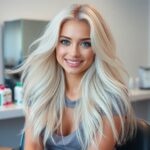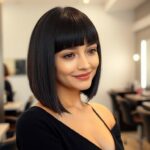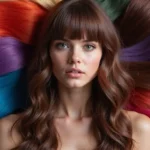We’ve all stood in the hair color aisle feeling overwhelmed by countless shades and numbers that seem to speak a foreign language. That’s where a hair colour chart becomes your best friend – it’s the secret weapon that transforms confusing codes into clear, confident color choices.
Understanding hair color charts isn’t just about picking a pretty shade. We’re talking about mastering the numbering system that determines whether you’ll walk out with the blonde of your dreams or a brassy disaster. These charts decode everything from depth levels to undertones, giving you the power to communicate exactly what you want to your colorist.
Whether you’re planning a DIY transformation or preparing for a salon visit, we’ll guide you through reading these essential tools. You’ll discover how professional colorists use these charts to create stunning results and why they’re crucial for maintaining your perfect shade.
Understanding Hair Color Chart Basics and Terminology
We’ll break down the fundamental components that make hair color charts your roadmap to achieving perfect results every time.
Natural Hair Color Levels
Natural hair color levels form the foundation of every hair color chart, ranging from 1 (black) to 10 (lightest blonde). We use this numbering system to identify your starting point before any chemical processing begins. Level 1 represents the darkest natural black hair, while level 10 indicates platinum blonde shades.
Each level corresponds to the amount of natural pigment present in your hair strands. Levels 1-3 contain the most melanin and appear as black to dark brown shades. Levels 4-6 represent medium to light brown tones that most people naturally possess. Levels 7-10 showcase blonde variations from dark blonde to the palest platinum shades.
Understanding your current level helps determine how much lightening you’ll need to achieve your desired color. We can’t skip levels when going lighter, which means level 3 hair requires more processing time than level 6 hair to reach level 8 blonde.
Undertones and Overtones
Undertones are the subtle colors that appear beneath your hair’s surface and influence how your final color will look. We identify these hidden hues to prevent unwanted color results like orange or brassy tones. Common undertones include red, orange, yellow, and ash (blue or green) that exist naturally in all hair types.
Red undertones typically appear in darker hair levels and create warmth in brown shades. Orange undertones emerge when dark hair gets lightened and often require neutralization with blue based toners. Yellow undertones surface in lighter levels and can make blonde hair appear brassy without proper treatment.
Overtones represent the visible color that sits on top of your hair after coloring. We use overtones to counteract unwanted undertones or enhance desired effects. Ash overtones contain blue or green pigments that neutralize warm undertones. Golden overtones add warmth and richness to cooler base colors.
Color Depth and Intensity
Color depth refers to how dark or light a shade appears on the hair color chart scale. We measure depth using the same 1-10 numbering system as natural levels, with lower numbers indicating deeper, darker colors. Each depth level creates different visual effects and requires exact processing techniques.
Deeper colors (levels 1-4) provide more dramatic coverage and longer lasting results on gray hair. Medium depths (levels 5-7) offer versatility and work well for subtle changes or color blending. Lighter depths (levels 8-10) create bright, fashion forward looks but require more maintenance.
Color intensity describes how vibrant or muted a shade appears after application. We achieve high intensity colors through concentrated pigment formulations that create bold, statement looks. Low intensity colors contain less pigment concentration and produce subtle, natural appearing results.
Permanent colors typically offer the highest intensity levels, while semi permanent options provide medium intensity effects. Temporary colors deliver the lowest intensity but allow for easy color changes without long term commitment.
Exploring Natural Hair Color Categories
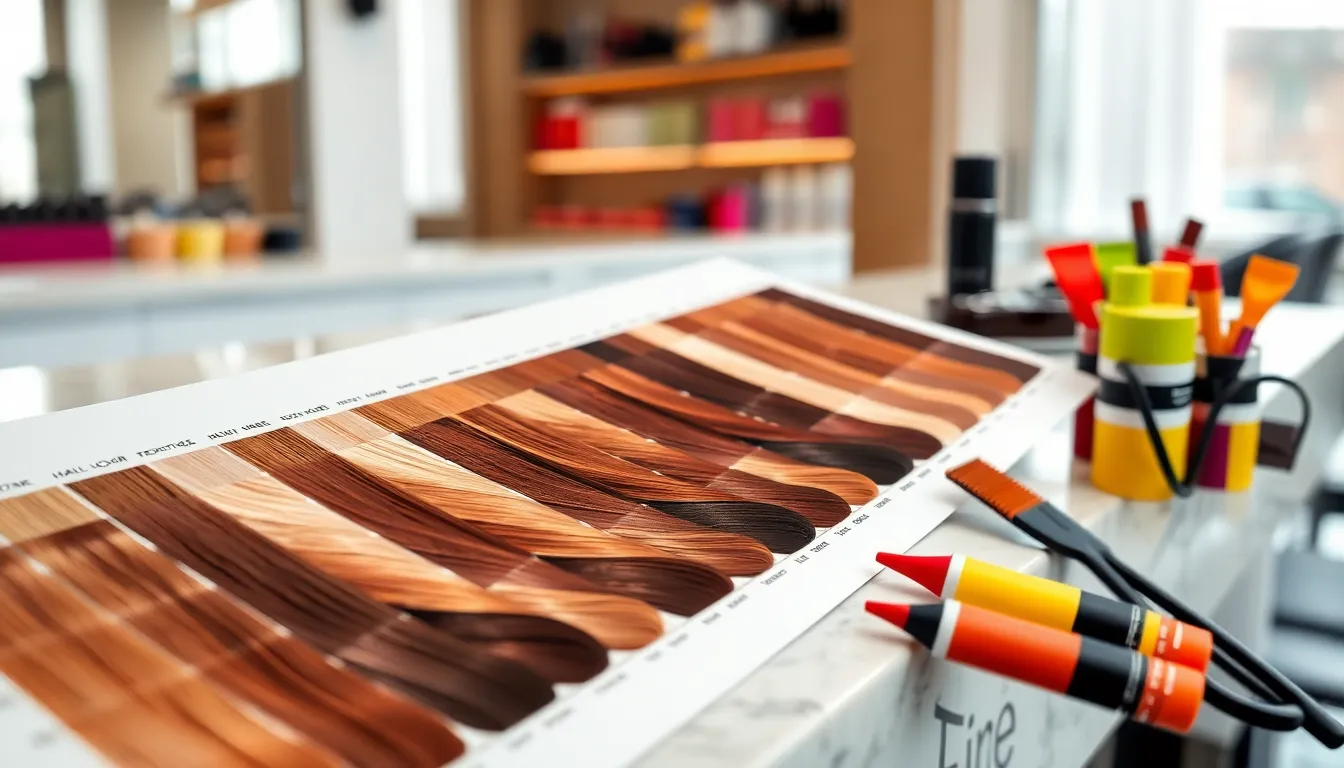
Natural hair color categories form the foundation of every professional hair color chart. Understanding these categories helps us identify starting points and predict color outcomes more accurately.
Blonde Hair Shades
Platinum blonde represents the lightest natural shade at level 10 on professional color charts. This rare natural color appears in less than 2% of the global population and requires minimal lifting for most color transformations.
Ash blonde contains cool undertones that neutralize yellow and orange pigments naturally. We often see this shade at levels 8-9 and it provides an excellent base for fashion colors like silver or pastel tones.
Golden blonde showcases warm undertones with yellow and honey highlights throughout the hair shaft. This popular shade sits at levels 7-8 and complements warm skin tones beautifully.
Strawberry blonde combines blonde base tones with subtle red undertones creating a unique natural color. This rare shade affects only 1-2% of people worldwide and typically measures at level 7-8 on color charts.
Brown Hair Variations
Light brown hair dominates at level 6 and offers versatility for both lightening and darkening processes. This shade contains balanced warm and cool undertones making it ideal for dramatic color changes.
Medium brown appears at level 5 and represents the most common natural hair color globally. About 68% of the industry’s population has medium brown hair with varying undertone combinations.
Dark brown sits at level 4 and contains rich chocolate undertones that require important lifting for lighter colors. This dense pigmentation provides excellent coverage for gray hair and maintains color longevity.
Auburn brown blends brown base tones with red highlights creating natural depth and dimension. We classify this unique variation at levels 4-5 depending on the red undertone intensity.
Black Hair Types
True black measures at level 1 and contains the highest concentration of melanin pigments. This natural color requires pre-lightening for any important color changes and appears in approximately 75% of the global population.
Soft black sits at level 2 with subtle brown undertones visible in direct sunlight. This variation allows for easier color transitions compared to true black hair.
Blue black contains cool undertones that create an almost iridescent appearance under certain lighting conditions. We often see this natural variation in individuals with Asian or African heritage.
Red Hair Tones
Auburn red combines deep red pigments with brown undertones at levels 4-5. This natural shade occurs in only 2-4% of the population and provides a rich base for enhanced red colors.
Copper red showcases bright orange undertones at level 6-7 creating vibrant natural highlights. This rare genetic trait appears most frequently in Celtic populations.
Burgundy red blends red base tones with purple undertones creating sophisticated depth. We classify this natural variation at levels 3-4 and it complements cool skin tones exceptionally well.
Strawberry red features light red pigments with pink undertones typically at level 7-8. This delicate natural shade requires special care during chemical processing to maintain its unique character.
Decoding Professional Hair Color Chart Systems
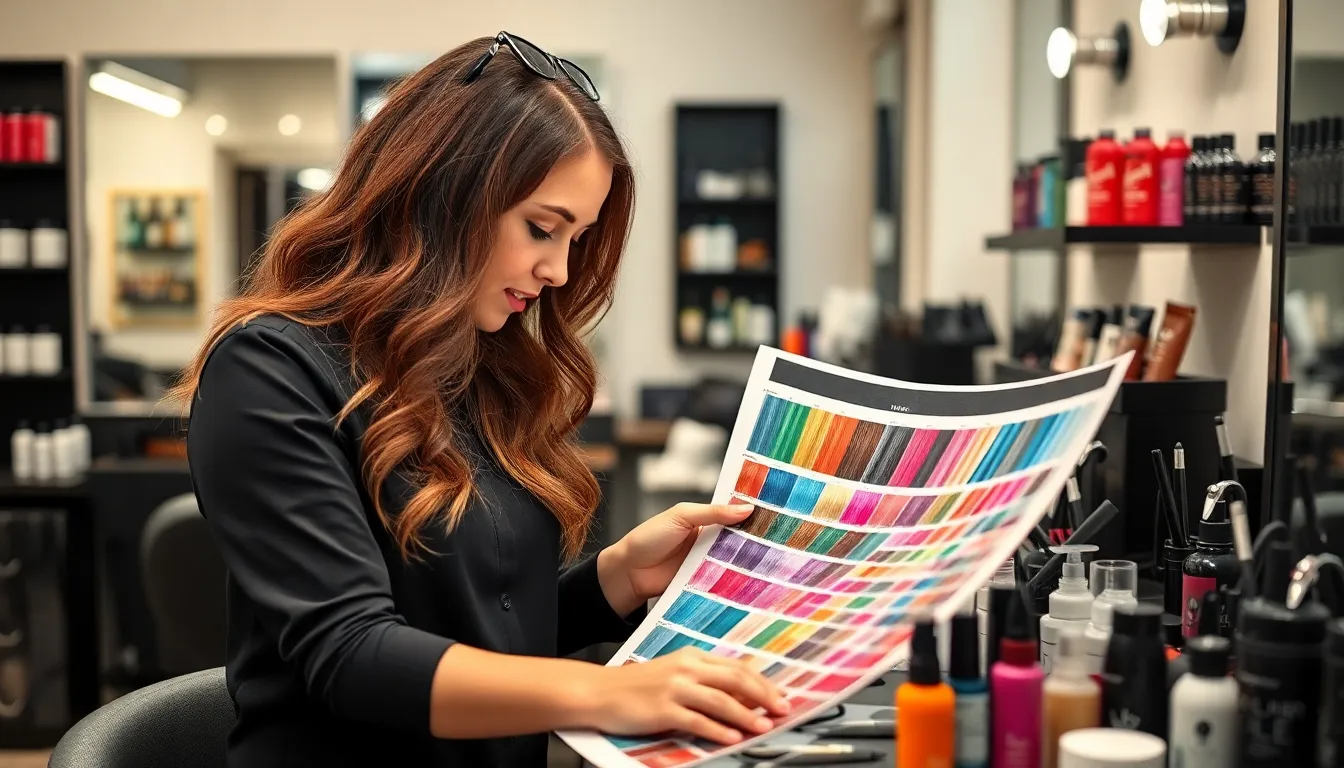
Professional hair color charts use systematic numbering codes that eliminate guesswork from the coloring process. We’ll break down these industry standard systems to help you navigate any professional color chart with confidence.
Level System (1-10 Scale)
The level system forms the foundation of professional hair coloring by measuring hair’s natural darkness or lightness on a standardized 1-10 scale. Level 1 represents the deepest black hair while level 10 indicates the lightest natural blonde. Understanding this scale helps us determine how much lightening your hair needs before reaching your desired shade.
Most people fall between levels 2-8 on this natural spectrum. Level 2-3 encompasses dark brown to black hair that requires important bleaching for dramatic color changes. Levels 4-6 include medium to light brown shades that offer more flexibility for color transformation. Levels 7-8 represent darker blonde hair that accepts color easily without excessive processing.
Professional colorists use this level system to calculate processing times and chemical strength needed for each client. Knowing your starting level prevents over-processing and helps predict realistic color outcomes. The level also determines whether you need pre-lightening or can achieve your goal with direct color application.
Tone Indicators and Codes
Professional hair color systems use letter and number combinations to indicate exact tones and undertones in each formula. The first number after the decimal point typically represents the primary tone while subsequent numbers indicate secondary tones. These codes ensure consistent color results across different applications and stylists.
Common tone indicators include A for ash (green base), G for gold (yellow base), R for red (warm base), and N for neutral (balanced undertones). Some brands use numbers instead of letters, where 1 represents ash, 3 indicates gold, 4 shows copper, and 6 denotes red tones. Understanding these codes helps us predict how the color will look on different hair types.
Secondary tone indicators modify the primary tone to create more complex shades. For example, a color coded as 7.13 contains level 7 lightness with primary ash tone and secondary gold tone. These combinations allow colorists to neutralize unwanted tones or enhance desired ones for customized results.
Brand-Exact Color Numbering
Each professional hair color brand develops its own numbering system while following basic industry standards for levels and tones. We’ve compiled the most common variations to help you decode different brand charts effectively.
| Brand | Level Format | Tone System | Example |
|---|---|---|---|
| Wella | Single digit + tone letter | A (ash), G (gold), R (red) | 7A (level 7 ash) |
| L’Oréal | Number + decimal + tone code | Numbers 1-6 for tones | 7.13 (level 7, ash-gold) |
| Schwarzkopf | Level + hyphen + tone number | 1 (ash), 3 (gold), 6 (red) | 7-1 (level 7 ash) |
| Redken | Letter + number combination | Various letter codes | 7AB (level 7 ash-brown) |
Wella uses straightforward letter coding that makes tone identification simple for beginners. L’Oréal’s decimal system allows for precise tone combinations using multiple numbers. Schwarzkopf employs hyphenated formatting that clearly separates level from tone information.
Some brands include additional indicators for special effects or processing requirements. These might include letters for high lift colors, permanent versus semi-permanent formulas, or exact application instructions. Always consult the brand’s exact chart legend to decode these additional symbols accurately.
Professional colorists often work with multiple brands and must quickly translate between different numbering systems. Mastering these variations ensures you can communicate effectively with any stylist and understand color formulations across different product lines.
Identifying Your Current Hair Color Level
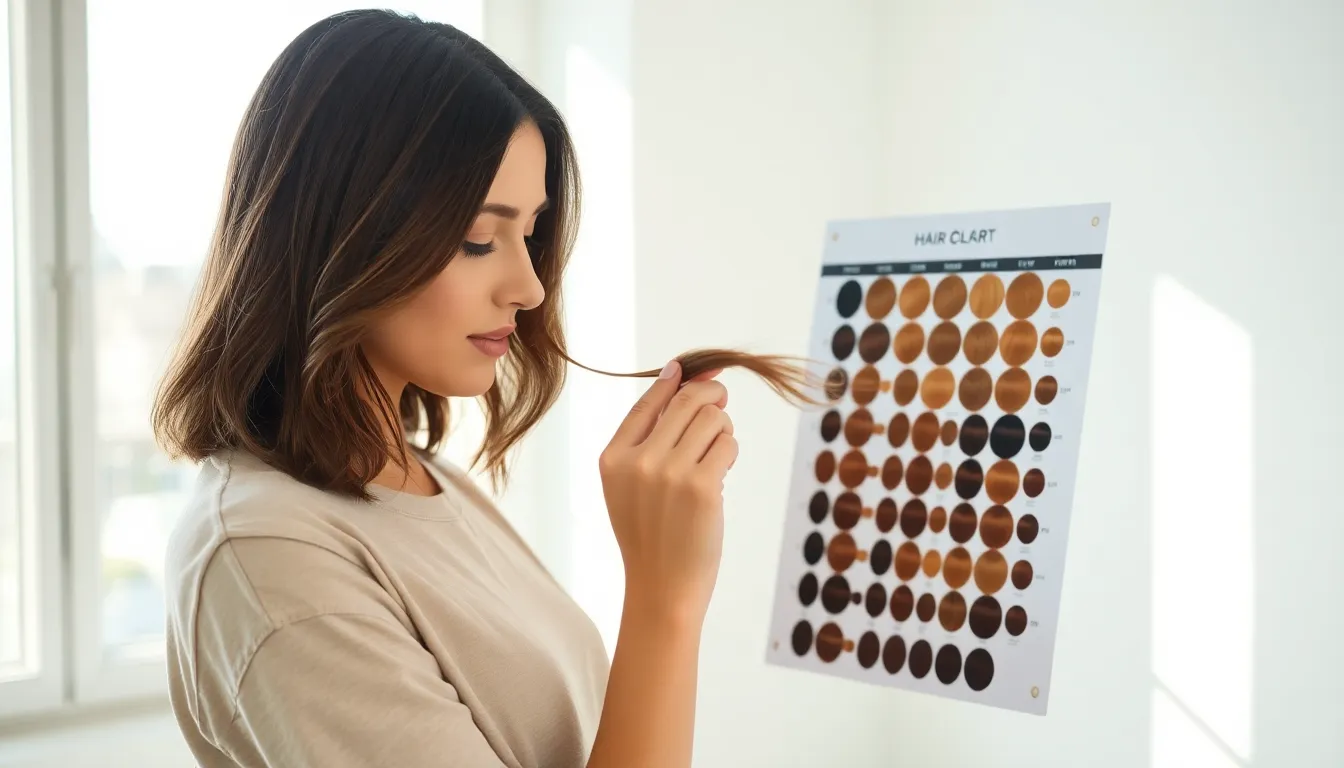
Understanding your current hair color level forms the foundation for successful color transformations. We’ll explore proven methods to accurately assess your starting point before making any chemical changes.
Assessment Techniques
Strand Testing provides the most accurate method for determining your true hair color level. We recommend sectioning off a small piece of hair from the back of your head and comparing it against professional color charts under natural light. This technique eliminates guesswork and prevents costly color mistakes.
Root Analysis reveals your natural hair color without the influence of previous treatments or sun damage. We examine the first inch of hair closest to your scalp to identify your true level. This area typically shows minimal chemical alteration and environmental effects.
Comparison Swatching involves matching your hair against professional color samples in good lighting conditions. We suggest using multiple swatches from different brands to ensure accuracy. Color perception varies between manufacturers and their exact formulations.
Digital Color Analysis uses smartphone apps designed specifically for hair color assessment. We find these tools helpful for preliminary evaluation but recommend professional consultation for final decisions. Technology continues improving but cannot replace trained colorist expertise.
Lighting Considerations
Natural Daylight offers the gold standard for accurate hair color assessment because it contains the full spectrum of light. We always recommend examining your hair near a window during midday hours when sunlight is brightest and most neutral. Artificial lighting can dramatically alter color perception.
Fluorescent Lighting tends to enhance cool tones while diminishing warm undertones in hair color evaluation. We notice this type of lighting makes hair appear ashier or more muted than its true color. Office environments typically use fluorescent bulbs that can mislead color assessment.
Incandescent Bulbs cast a warm yellow glow that intensifies golden and red undertones while masking cool tones. We observe that hair often appears warmer and more vibrant under these conditions than in natural light. Home lighting frequently uses incandescent or warm LED alternatives.
Color Temperature Matching involves using daylight balanced LED lights (5600K-6500K) for consistent hair color evaluation. We recommend investing in proper lighting equipment if you frequently assess hair colors at home. Professional colorists use color corrected lighting in their salons.
Consultation Tools
Professional Color Wheels help identify complementary and contrasting colors for your current hair level. We use these tools to predict how different tones will interact with your existing color base. Understanding color theory prevents unwanted muddy or brassy results.
Level Comparison Charts display numbered scales from 1 to 10 alongside actual hair samples for precise matching. We rely on these physical references because they eliminate the guesswork involved in digital color representation. Professional brands like Wella and L’Oréal provide comprehensive comparison systems.
Skin Tone Analysis Cards determine whether you have warm cool or neutral undertones that complement exact hair colors. We place these cards near your face under natural lighting to identify the most flattering color families. Your skin’s undertones significantly influence how hair colors appear.
Porosity Testing Kits assess how your hair absorbs and holds color based on its current condition and processing history. We perform these tests by observing how quickly water droplets absorb into clean hair strands. High porosity hair requires different coloring approaches than low porosity hair.
Choosing the Right Hair Color for Your Skin Tone

Understanding your skin’s undertones transforms hair color selection from guesswork into strategic planning. We’ll guide you through matching your skin tone with complementary hair colors that enhance your natural beauty.
Warm Undertones Guide
Warm undertones appear golden, peachy, or yellow beneath your skin’s surface. Identifying these undertones means looking at your veins, which typically appear greenish rather than blue or purple. Your skin probably tans easily and looks radiant in gold jewelry compared to silver accessories.
Golden blonde shades create stunning harmony with warm skin tones. Honey blonde (level 7-8) adds richness while maintaining natural warmth. Caramel highlights blend seamlessly with your undertones, creating dimensional color that appears effortless.
Rich brown colors complement warm undertones beautifully. Chocolate brown (level 4-5) provides depth without overwhelming your natural glow. Auburn brown introduces subtle red tones that enhance your skin’s golden qualities. Chestnut brown offers versatility for both professional and casual settings.
Copper red variations make warm undertones sing. True copper (level 6-7) creates vibrant contrast while staying within your color family. Strawberry blonde combines red and gold elements perfectly. Burgundy red adds sophistication with its deeper wine tones.
Colors to avoid include ash blonde, platinum blonde, and cool browns. These shades contain blue or green undertones that clash with your natural warmth, creating unflattering contrasts.
Cool Undertones Guide
Cool undertones display pink, red, or blue hues beneath your skin. Your veins likely appear blue or purple, and you probably burn before tanning. Silver jewelry enhances your complexion better than gold pieces.
Ash blonde variations perfectly complement cool undertones. Platinum blonde (level 9-10) creates striking elegance without competing with your natural coolness. Ice blonde introduces subtle silver tones that mirror your undertones. Sandy blonde provides a softer option while maintaining cool characteristics.
Cool brown selections enhance your skin’s natural tones. Espresso brown (level 2-3) adds richness without warmth interference. Mushroom brown offers neutral depth with subtle gray undertones. Cocoa brown provides versatility for various occasions and styling preferences.
True black options create dramatic beauty with cool undertones. Blue black introduces subtle cool highlights that complement your natural coloring. Soft black provides depth without overwhelming fair cool skin. Jet black creates bold contrast for those wanting maximum impact.
Cherry red tones work exceptionally well with cool undertones. Burgundy red combines deep wine tones with cool base colors. Mahogany red offers sophisticated richness. Violet red creates unique dimension while staying within your cool color family.
Neutral Undertones Guide
Neutral undertones blend both warm and cool elements equally. Your veins appear neither distinctly green nor blue, and both gold and silver jewelry look flattering. You probably tan gradually and rarely experience extreme burning or immediate browning.
Versatile blonde choices work beautifully with neutral undertones. Medium blonde (level 6-7) provides natural looking color without favoring warm or cool directions. Beige blonde combines subtle warm and cool tones seamlessly. Dirty blonde offers lived in color that requires minimal maintenance.
Balanced brown options complement neutral undertones perfectly. Medium brown (level 5-6) creates natural depth without temperature bias. Mocha brown blends chocolate and coffee tones harmoniously. Walnut brown provides richness with balanced undertones that enhance your natural coloring.
Strategic red applications add personality without clashing. Rose gold combines warm copper with cool pink undertones. Mahogany brown introduces subtle red without overwhelming warmth. Deep auburn provides richness while maintaining color balance.
Professional recommendations suggest starting with colors closest to your natural level. Gradual changes allow you to experiment without dramatic commitment. Highlights and lowlights create dimension while testing different tones within your neutral range.
Popular Hair Color Trends and Chart References
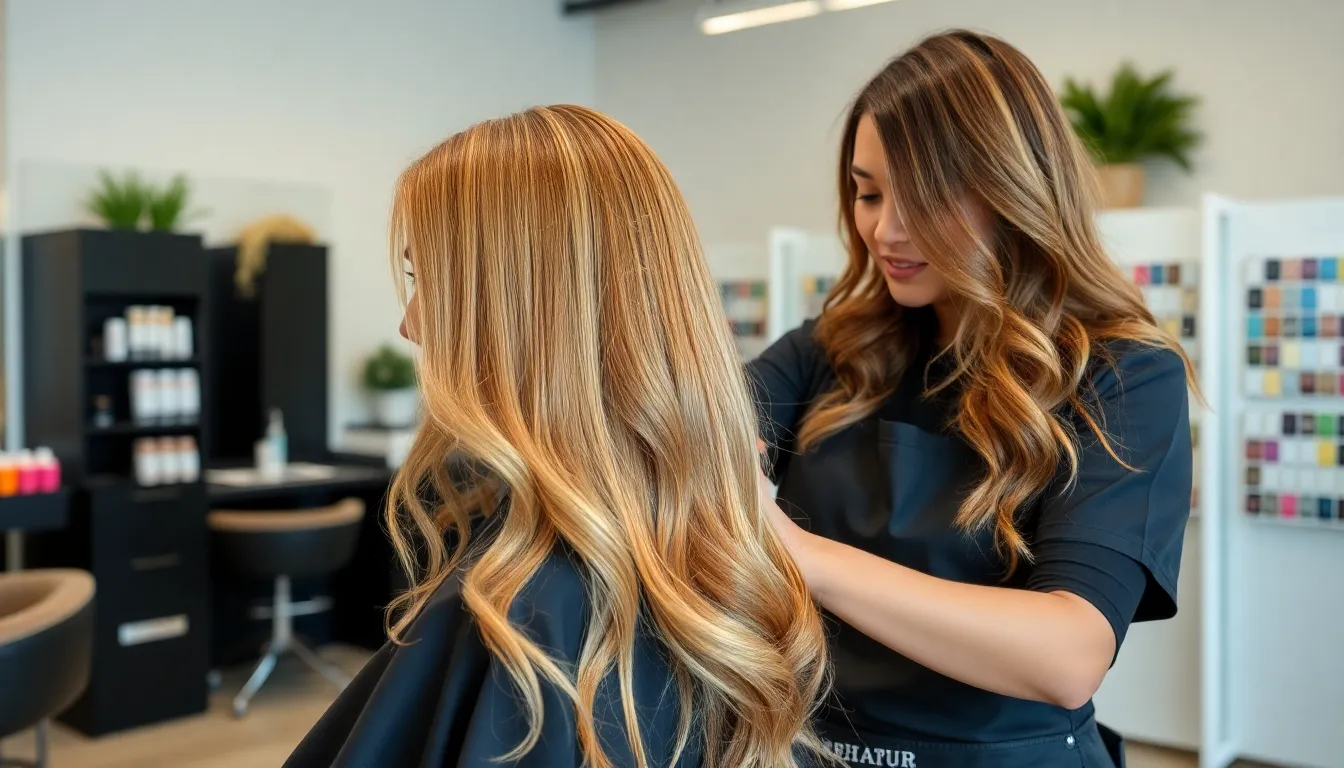
Modern hair color trends continue evolving with innovative techniques that create stunning visual effects. Professional colorists rely on exact chart references to achieve these trending looks with precision.
Balayage Color Combinations
Balayage techniques use strategic color placement to create natural-looking highlights that mimic sun-kissed hair. Professional colorists reference level charts to determine the perfect lift needed for seamless color transitions.
Blonde Balayage Options:
- Honey blonde (level 7-8) paired with caramel lowlights (level 5-6)
- Platinum highlights (level 10) contrasted against ash brown base (level 4)
- Strawberry blonde accents (level 8) blended with golden brown roots (level 5)
Brunette Balayage Combinations:
- Chocolate brown base (level 3) enhanced with copper highlights (level 6-7)
- Espresso foundation (level 2) brightened with golden caramel tones (level 6)
- Medium brown canvas (level 5) illuminated with honey blonde pieces (level 8)
Chart references become essential when creating these multi-dimensional looks. Colorists use tone indicators to ensure complementary shades work harmoniously together. Processing times vary based on the starting level and desired lift amount.
Ombre and Gradient Effects
Ombre coloring creates dramatic transitions from dark roots to lighter ends through gradual color shifts. Chart systems help determine the perfect gradient progression for seamless color flow.
Classic Ombre Progressions:
- Dark brown roots (level 2) transitioning to blonde ends (level 8-9)
- Black base (level 1) flowing into copper tones (level 6-7)
- Medium brown start (level 4) blending to ash blonde finish (level 7-8)
Reverse Ombre Applications:
- Light blonde roots (level 9) deepening to chocolate brown ends (level 3)
- Platinum base (level 10) graduating to auburn tips (level 5-6)
- Golden blonde start (level 8) darkening to espresso finish (level 2)
Professional charts indicate exactly how many levels of lift create optimal contrast ratios. Colorists reference undertone charts to maintain color harmony throughout the gradient. Application techniques require precise sectioning based on hair length and desired fade intensity.
Fantasy and Fashion Colors
Fantasy colors push creative boundaries with vibrant, unconventional shades that require specialized chart systems. These fashion-forward looks demand careful pre-lightening to achieve maximum color saturation.
Vibrant Color Categories:
- Electric blues requiring level 9-10 base lightness
- Hot pinks needing platinum blonde foundation (level 10)
- Purple tones achieving best results on level 8-9 hair
- Green shades requiring complete color removal (level 10)
Pastel Color Applications:
- Lavender tones blending beautifully on level 9 blonde bases
- Rose gold effects complementing level 8-9 foundations
- Mint green accents working best on platinum blonde hair (level 10)
- Peach tones requiring level 9 pre-lightened canvas
Fashion color charts differ significantly from traditional numbering systems. Manufacturers provide exact mixing ratios and processing guidelines for achieving these bold looks. Maintenance schedules become crucial since fashion colors fade more rapidly than conventional shades.
Professional colorists reference specialized fantasy color wheels to create custom blends. These charts show color compatibility and predict fading patterns over time. Client consultation becomes even more important when working with temporary versus semi-permanent fashion formulas.
Using Hair Color Charts for DIY Coloring

Professional hair color charts become invaluable tools when we’re transforming our hair at home. These systematic guides help us achieve salon-quality results while avoiding costly color mishaps.
At-Home Color Selection
Selecting the right shade starts with matching our current level to the chart’s numbering system. We should always choose colors within 1-2 levels of our natural hair to prevent unexpected results. Box dye charts typically feature simplified numbering compared to professional systems, but they still follow the same basic principles.
Consider these key selection factors when choosing at-home colors:
- Natural hair level – Dark brown hair (level 3) can’t reach platinum blonde (level 10) in one session
- Undertone compatibility – Warm skin tones pair better with golden and copper shades
- Previous color treatments – Previously colored hair requires different processing considerations
- Desired maintenance level – Lighter shades need more frequent touch-ups than darker ones
Reading drugstore color charts requires understanding their simplified codes. Most brands use basic descriptors like “medium ash brown” or “golden blonde” rather than complex numbering systems. We should always check the model’s before photo on the box to gauge realistic expectations.
Processing Time Guidelines
Processing times vary significantly based on our hair’s starting level and desired end result. The chart’s recommended timing serves as our baseline, but individual hair characteristics affect the actual development time needed.
| Hair Type | Processing Time | Notes |
|---|---|---|
| Fine/Damaged | 15-20 minutes | Processes faster than healthy hair |
| Normal Texture | 25-30 minutes | Standard timing on most boxes |
| Coarse/Resistant | 35-45 minutes | May need maximum development time |
| Previously Colored | Variable | Depends on existing color buildup |
Strand testing gives us the most accurate timing for our exact hair. We should mix a small amount of color and apply it to a hidden section 48 hours before our full application. This test reveals both timing needs and potential allergic reactions.
Environmental factors influence processing speed significantly. Room temperature affects chemical reactions, with cooler environments slowing development and warmer spaces accelerating it. We should avoid coloring in extremely hot or cold conditions for predictable results.
Expected Results vs Reality
Box dye results rarely match the model’s hair shown on packaging exactly. These images represent ideal conditions on pre-lightened hair, not the varied starting points we bring to the process. Our natural undertones and previous treatments create unique outcomes.
Understanding realistic expectations prevents disappointment with DIY coloring results. Dark hair won’t lift to light blonde without bleaching, regardless of what the box promises. We can typically expect to achieve colors within our natural level range or slightly darker.
Common misconceptions about at-home coloring include:
- One-step lightening miracles – No box dye can lift dark hair more than 2-3 levels safely
- Perfect color matching – Individual hair porosity creates slight variations in uptake
- Permanent damage fears – Modern formulas are gentler than older permanent dyes
- Professional-only techniques – Many salon looks are achievable with proper chart reading
Managing expectations helps us appreciate successful DIY results. We should view our first attempt as a learning experience rather than expecting perfection. Chart knowledge combined with realistic goals leads to satisfying home coloring outcomes that build our confidence for future experiments.
Professional Salon Hair Color Chart Applications
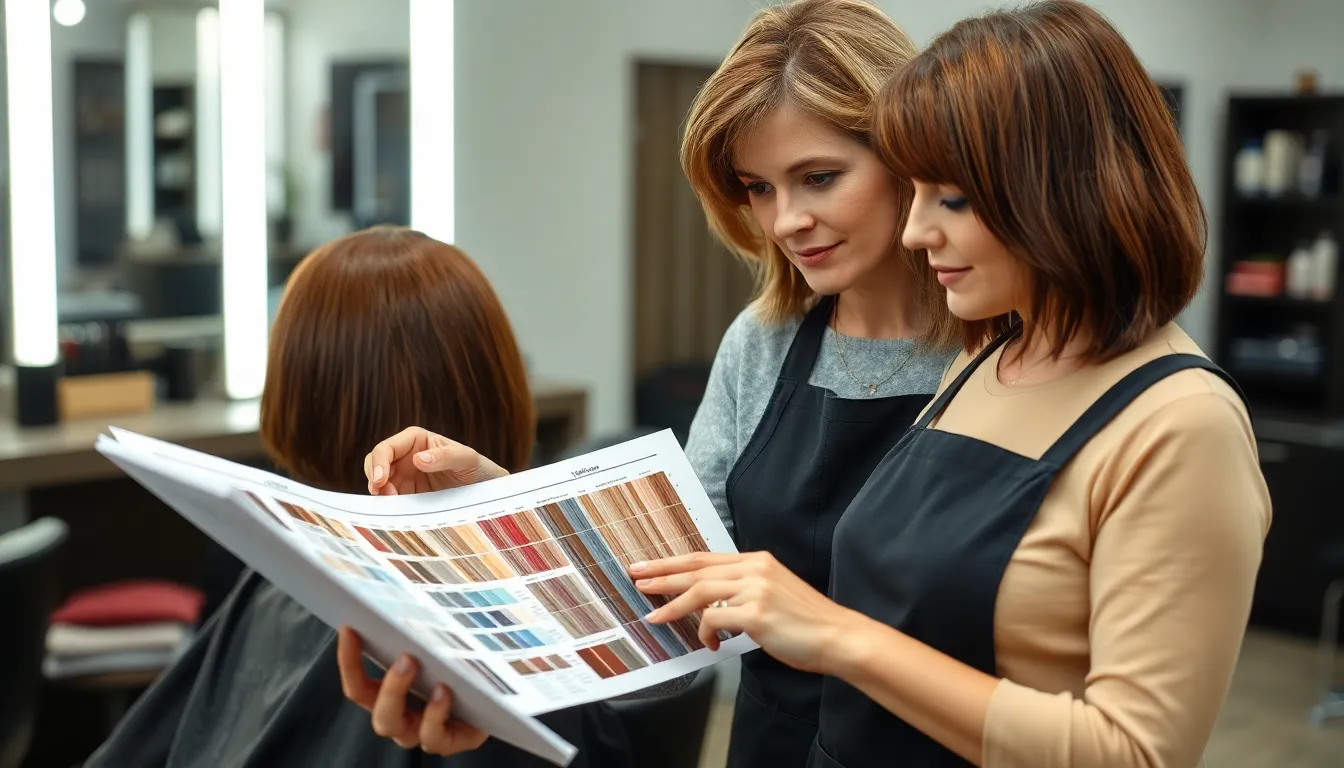
Professional salons rely on hair color charts as their blueprint for achieving precise, consistent results that match client expectations. These comprehensive systems guide colorists through every step of the transformation process.
Colorist Consultation Process
Professional colorists begin each consultation by analyzing the client’s current hair level using standardized chart references. We examine natural pigmentation under multiple lighting conditions to determine the exact starting point on the 1-10 level scale. Strand assessment techniques help us identify underlying tones that might interfere with desired color outcomes.
Documentation becomes crucial during this phase as we record current levels, previous chemical treatments, and porosity variations throughout the hair shaft. Color history analysis reveals how past processing affects the hair’s ability to lift or deposit new pigments. We use consultation cards that match chart systems to show clients realistic expectations based on their starting level.
Skin tone evaluation guides our recommendation process as we reference undertone compatibility charts to suggest flattering color families. Warm undertones pair with golden and copper-based formulas while cool undertones benefit from ash and violet-based options. Neutral undertones offer the most versatility across different color families.
Time frame discussions help set realistic expectations for multi-session transformations that require gradual lightening or toning processes. We explain how dramatic level changes often need multiple appointments to maintain hair integrity.
Custom Color Formulation
Formula creation starts with precise level matching using manufacturer-exact chart systems that translate desired outcomes into measurable ratios. Professional colorists combine primary bases with secondary tones to achieve custom shades that aren’t available in standard color lines. We calculate developer volumes based on the difference between current and target levels.
Mixing ratios follow chart specifications that account for hair porosity, texture, and previous chemical exposure to ensure consistent results. Advanced formulation techniques include pre-lightening calculations for fashion colors and tonal adjustments for gray coverage. We document every formula combination for future touch-up appointments.
Testing protocols involve strand tests on inconspicuous sections to verify processing times and final color results before full application. Color wheel theory guides our neutralization techniques when counteracting unwanted tones during the lightening process.
| Formulation Factor | Chart Reference | Professional Application |
|---|---|---|
| Base Level Selection | 1-10 Scale | Determines lifting requirements |
| Tone Neutralization | Color Wheel | Cancels unwanted pigments |
| Developer Volume | Processing Chart | Controls lift and deposit rates |
| Processing Time | Strand Test Results | Ensures optimal color saturation |
Color Correction Planning
Color correction procedures require detailed analysis using specialized correction charts that identify problematic tones and their neutralizing counterparts. We assess unwanted results by comparing current color outcomes against standard chart references to determine correction pathways. Problem diagnosis involves understanding why certain tones appeared and how to eliminate them effectively.
Correction formulas often involve multiple steps that gradually shift hair from its current state to the desired outcome without causing additional damage. We plan lightening sequences for over-darkened hair and toning protocols for brassy or muddy results. Each correction step references exact chart guidelines to ensure predictable results.
Timeline planning becomes essential as corrections typically require several appointments spaced weeks apart to allow hair recovery between processes. We educate clients about the correction journey using before-and-after chart comparisons that show realistic intermediate stages. Maintenance schedules help preserve corrected colors and prevent future issues.
Professional correction work demands understanding of color theory principles that standard DIY approaches often overlook, making chart knowledge indispensable for successful outcomes.
Maintaining Your Chosen Hair Color
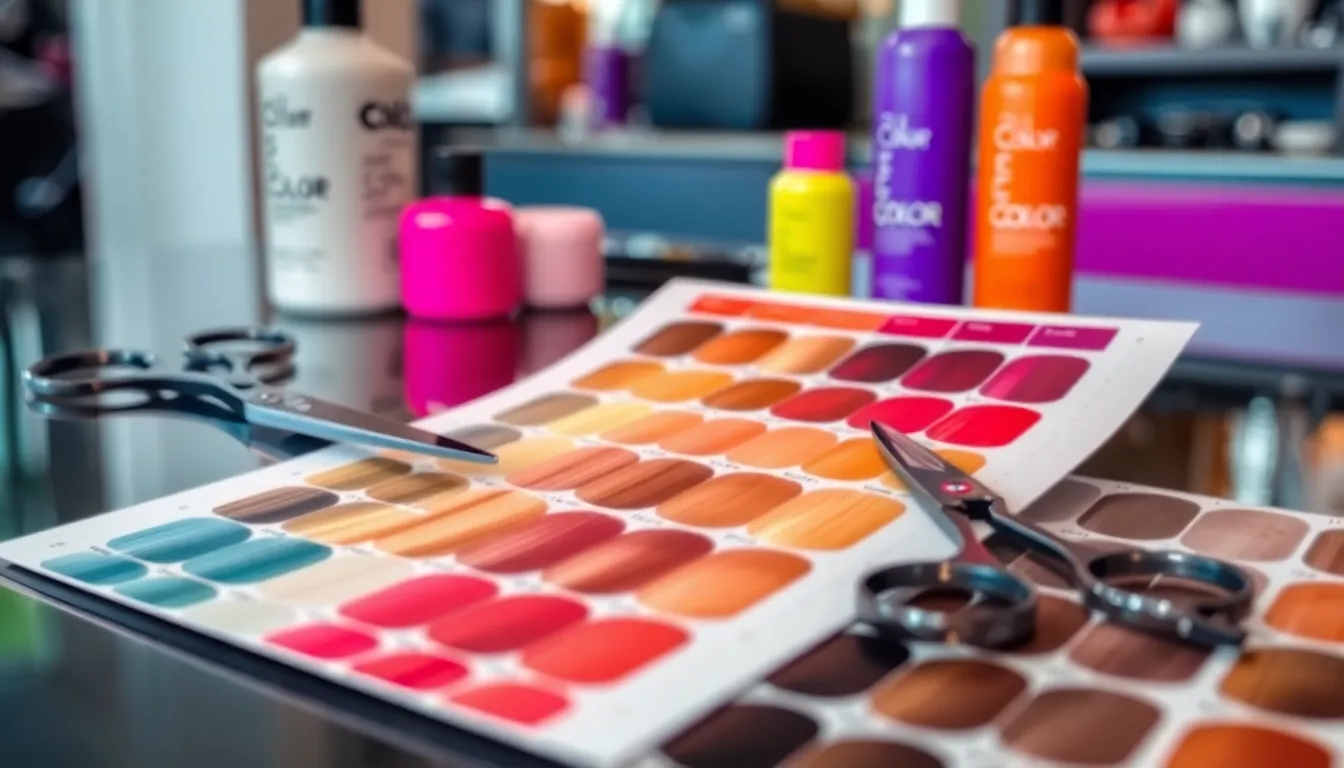
Proper maintenance extends the life of your hair color investment while preserving the vibrancy you worked so hard to achieve. Strategic care routines protect against fading and ensure your chosen shade from the hair color chart remains true to its original formulation.
Color-Safe Products
Sulfate-free shampoos preserve color molecules by preventing harsh stripping that traditional cleansers cause. We recommend using products specifically formulated for color-treated hair, as they contain gentler surfactants that maintain moisture balance while protecting pigment integrity.
Deep conditioning treatments restore protein and moisture levels that chemical processing depletes. Apply color-safe masks weekly to strengthen hair cuticles and lock in color molecules for extended vibrancy.
Leave-in protectants create barriers against environmental damage that accelerates color loss. UV filters in these products shield hair from sun exposure, while thermal protectants prevent heat styling damage that opens cuticles and releases color.
Color-depositing shampoos refresh fading tones between salon visits. Purple shampoos neutralize brass in blonde hair, while red-depositing formulas revive copper and auburn shades according to their position on professional color charts.
Touch-Up Scheduling
Root touch-ups require scheduling every 4-6 weeks for permanent color to maintain seamless coverage. We track regrowth patterns based on individual hair growth rates, which typically range from 0.5 to 1 inch monthly.
Semi-permanent colors need refreshing every 6-8 weeks as they gradually wash out with each cleansing session. Fashion colors and fantasy shades require more frequent maintenance, often every 3-4 weeks, due to their molecular size and fading characteristics.
Highlight maintenance follows different timelines depending on technique and desired contrast levels. Balayage applications can extend 8-12 weeks between appointments, while traditional foil highlights need attention every 6-8 weeks to prevent obvious regrowth lines.
Gloss treatments enhance color depth and shine for 4-6 weeks before requiring reapplication. These treatments seal cuticles while adding temporary color deposits that refresh overall tone according to your original chart selection.
Fading Prevention Tips
Water temperature control prevents unnecessary color loss during cleansing routines. We recommend using lukewarm water instead of hot water, which opens cuticles and allows color molecules to escape more readily.
Frequency reduction in washing extends color longevity significantly. Limiting shampoo sessions to every other day or using dry shampoo between washes helps maintain color intensity while preserving natural oils that protect treated hair.
Chemical avoidance includes steering clear of chlorinated pools and harsh styling products containing alcohol. Pool chemicals strip color rapidly, while alcohol-based products dehydrate hair and accelerate fading processes.
Environmental protection involves wearing hats during extended sun exposure and using UV-protective styling products. Sun damage breaks down color molecules and causes uneven fading that requires corrective treatments to restore chart-accurate shades.
Sleep protection includes using silk or satin pillowcases that create less friction against treated hair. These materials prevent mechanical damage that roughens cuticles and contributes to premature color loss during overnight movement.
Common Hair Color Chart Mistakes to Avoid
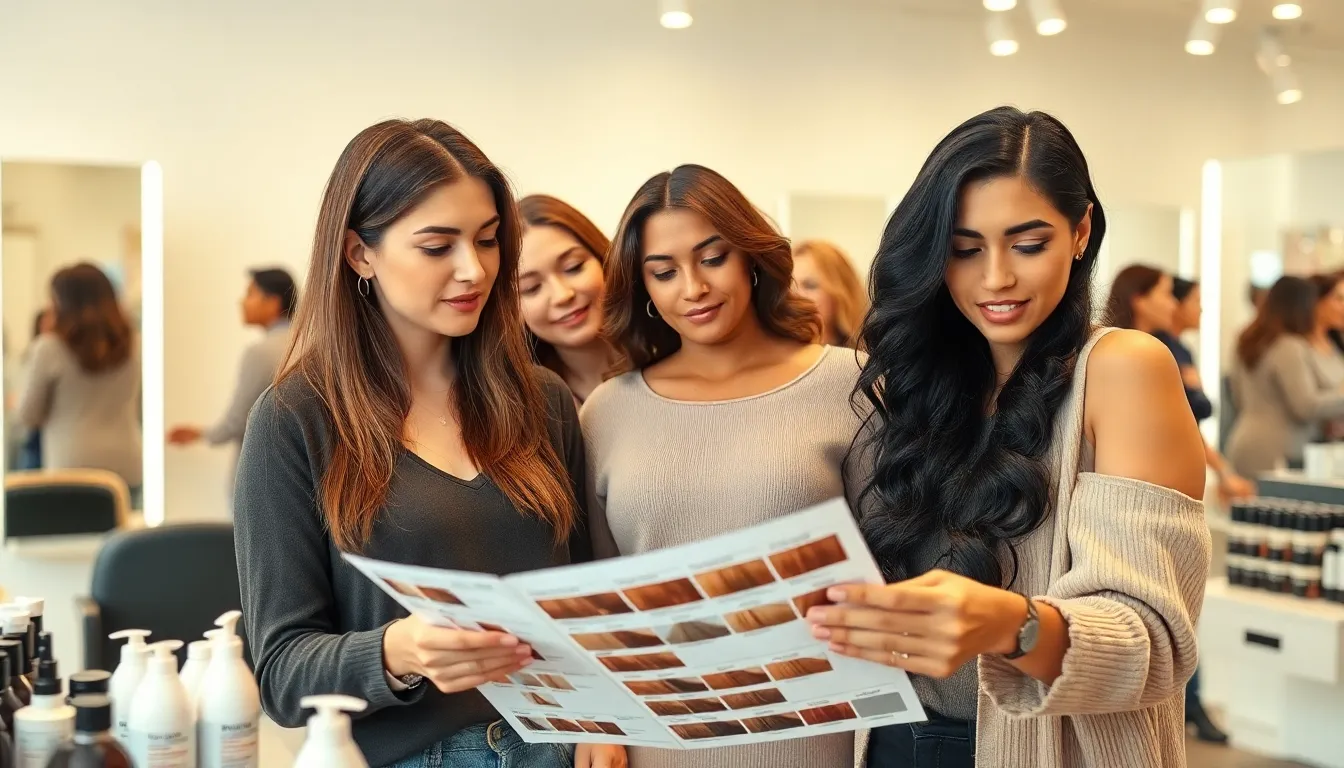
Even the most detailed hair color charts can’t protect you from common pitfalls that derail your coloring plans. We’ll explore the most frequent errors that lead to disappointing results and damaged hair.
Misreading Color Codes
Mixing up level numbers creates the biggest disasters in DIY hair coloring. We see clients who confused a level 6 medium brown with a level 3 dark brown, resulting in hair that’s three shades darker than intended. Professional charts use exact numbering systems where the first digit indicates the natural level, while secondary numbers represent undertones and intensity.
Decimal points in color codes carry crucial meaning that many people overlook. For example, 7.1 represents a level 7 blonde with ash undertones, while 7.4 indicates the same level with copper undertones. Schwarzkopf uses different notation than L’Oréal, so we recommend checking the brand’s exact legend before making any color decisions.
Letter codes accompanying numbers provide essential undertone information. We’ve noticed that people often ignore letters like “A” for ash, “G” for golden, or “R” for red, focusing only on the numerical level. This oversight leads to unwanted brass or unexpected coolness in the final result.
Ignoring Natural Undertones
Warm undertones in your hair will fight against cool-toned dyes throughout the coloring process. We observe this frequently when clients with naturally warm level 4 brown hair attempt to achieve an ash blonde without proper pre-lightening. The underlying orange pigments create muddy, greenish results instead of the crisp ash tone shown on the chart.
Cool natural undertones require different processing approaches than warm ones. Your hair’s existing pigment composition affects how new color molecules deposit, which is why strand testing becomes essential before full application. We recommend checking your natural hair against a professional undertone card in natural daylight for accurate assessment.
Neutral undertones offer the most flexibility but still need careful consideration. These hair types can pull either warm or cool depending on the formula choice and processing time. We’ve seen neutral-toned clients achieve beautiful results with both golden and ash shades when the colorist properly evaluates their exact undertone balance.
Unrealistic Expectations
Single-process coloring can’t transform dark hair into platinum blonde without serious damage. We regularly educate clients that moving from a natural level 2 black to a level 10 platinum requires multiple lightening sessions spaced weeks apart. Professional colorists use gradual approaches to maintain hair integrity while achieving dramatic transformations.
Box dye results rarely match the model’s hair on the package photo. These images show professionally colored hair under studio lighting, not the realistic outcome on previously processed or damaged hair. We recommend viewing chart swatches in person and understanding that your results will vary based on your starting point and hair condition.
Processing time variations affect final color outcomes significantly. Your hair’s porosity, previous chemical treatments, and natural resistance all influence how quickly color develops. We suggest following strand test timing rather than package instructions, as your exact hair type may need more or less development time for optimal results.
Conclusion
Hair color charts serve as your roadmap to achieving beautiful and consistent color results. We’ve shown you how these essential tools eliminate guesswork and help prevent costly mistakes whether you’re coloring at home or visiting a salon.
Understanding the numbering systems undertones and level assessments gives you the confidence to make informed decisions about your hair color journey. Remember that successful coloring takes patience and proper preparation.
With the knowledge you’ve gained about chart interpretation and color theory you’re now equipped to communicate effectively with professionals or tackle DIY projects safely. Your perfect shade is within reach when you use these charts as your guide.
Frequently Asked Questions
What is a hair color chart and why is it important?
A hair color chart is a professional tool that uses a numbering system to categorize hair colors by levels (1-10, from black to lightest blonde) and undertones. It’s essential because it helps predict color outcomes, ensures consistent results, and eliminates guesswork in hair coloring. Understanding these charts empowers you to communicate effectively with colorists and make informed decisions about hair color changes.
How do I determine my current hair color level?
To determine your hair color level, examine your natural roots in natural lighting and compare them to a professional level chart. Use techniques like strand testing, root analysis, and comparison swatching. Professional tools like color wheels and level comparison charts can provide accurate assessments. Avoid artificial lighting as it can distort color perception and lead to incorrect level identification.
What’s the difference between undertones and overtones in hair color?
Undertones are the underlying colors that naturally exist in your hair (warm, cool, or neutral), while overtones are the dominant colors you see on the surface. Understanding both is crucial because they interact to create your final color result. Ignoring undertones can lead to unwanted results, like orange tones when lightening dark hair or muddy colors when applying incompatible shades.
Can I use hair color charts for DIY coloring at home?
Yes, hair color charts are valuable for DIY coloring when used correctly. Start by identifying your current hair level and choose colors within 1-2 levels of your natural shade for best results. Always perform strand tests, follow processing time guidelines based on your hair type, and understand that dramatic changes often require professional expertise or multiple sessions to achieve safely.
How do professionals use hair color charts in salons?
Professional colorists use hair color charts during consultations to analyze clients’ current hair levels, document color history, and create custom formulations. They reference standardized charts to match undertones with skin tones, plan color corrections, and ensure consistent results. Charts also help communicate color goals clearly and set realistic expectations for the coloring process and maintenance requirements.
What hair colors work best with my skin tone?
Warm undertones pair well with golden blonde, chocolate brown, and copper shades. Cool undertones complement ash blonde, espresso brown, and cherry red tones. Neutral undertones can wear versatile options like medium blonde, mocha brown, and rose gold. Start with colors closest to your natural level and consider highlights or lowlights for a balanced, flattering look.
How often should I touch up my hair color?
Touch-up frequency depends on your color type and growth rate. Root touch-ups typically need attention every 4-6 weeks for permanent colors, while highlights may last 8-12 weeks. Fantasy colors require more frequent maintenance every 2-4 weeks. Factors like hair growth speed, color contrast with natural hair, and desired vibrancy level all influence your personal touch-up schedule.
What are the most common hair color chart mistakes to avoid?
Common mistakes include misreading color codes, ignoring decimal points that indicate undertones, and having unrealistic expectations about dramatic color changes in one session. Don’t skip strand testing, avoid attempting to lighten dark hair multiple levels at once, and never ignore your natural undertones. Understanding that hair condition significantly impacts final results is crucial for success.










